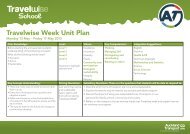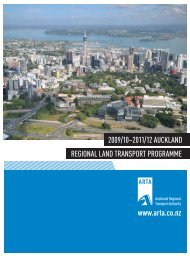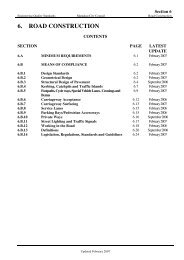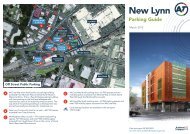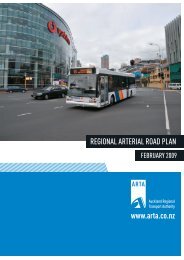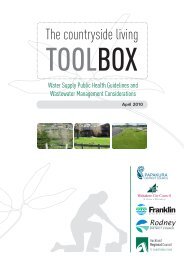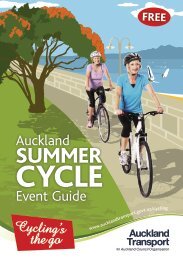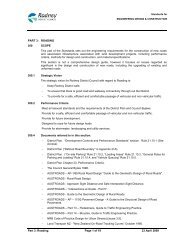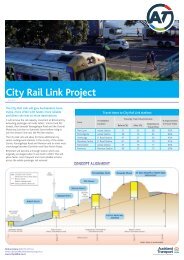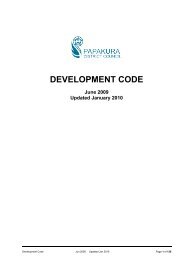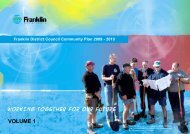Morningside Report and Summary Here - KiwiRail
Morningside Report and Summary Here - KiwiRail
Morningside Report and Summary Here - KiwiRail
You also want an ePaper? Increase the reach of your titles
YUMPU automatically turns print PDFs into web optimized ePapers that Google loves.
1. Work with other agencies in the development of their long-term (5-10 year) transport<br />
infrastructure plans to ensure that, over time, busy crossings are taken off grade with<br />
over <strong>and</strong> under passes.<br />
2. Ensure those over <strong>and</strong> under passes are effective alternatives for mobility users.<br />
3. Liaise with manufactures of mobility vehicles to try <strong>and</strong> establish improvements to wheel<br />
design to minimize risk at flange gaps. This could include wider wheels <strong>and</strong> or double<br />
wheels.<br />
Investigation Findings<br />
The findings of the Investigation <strong>Report</strong> are as follows:<br />
1. The combination of the uneven surface of the crossing on the day of the accident, the<br />
width <strong>and</strong> depth of the flange gap, <strong>and</strong> the angle of the crossing (which was at 67<br />
degrees to the railway line <strong>and</strong> runners) were major contributing factors to the accident.<br />
2. A number of factors contributed to this situation existing at the time of the accident <strong>and</strong><br />
our findings in that regard are:<br />
• At the highest level, the fact that at-grade pedestrian crossings (as opposed to the<br />
use of under <strong>and</strong> overpasses) continue to be utilised in New Zeal<strong>and</strong> on busy metro<br />
networks meant that this accident was possible.<br />
• No specific consideration was given to the appropriateness of the design of the<br />
pedestrian crossing used at <strong>Morningside</strong> for special needs users such as wheelchair<br />
bound pedestrians, push chair users <strong>and</strong> cyclists. Had such consideration been<br />
made, it may have resulted in a choice of design which may have been less<br />
susceptible to damage <strong>and</strong>/or once damaged, would have posed less of a potential<br />
hazard to wheelchair users. However, had the <strong>Morningside</strong> crossing been<br />
maintained as constructed, the crossing surface would likely not have posed a<br />
potential hazard to wheelchair users.<br />
• There was no specific recognition of potential hazards to special needs users such<br />
as wheelchair bound pedestrians, push chair users <strong>and</strong> cyclists in the maintenance<br />
inspection procedures for level crossings <strong>and</strong> when granting an exemption to the<br />
inspection regime to permit inspections to be undertaken from the cabs of<br />
locomotives, no specific consideration was given to level crossings.<br />
• Once the <strong>Morningside</strong> crossing suffered the water damage, the track inspection<br />
regime did not identify the deteriorated condition of the crossing, it was identified by a<br />
Track Inspector while performing other duties who reported it as requiring work.<br />
• Due to a number of failings within <strong>KiwiRail</strong>’s systems, the remedial work required to<br />
repair the surface of the <strong>Morningside</strong> Crossing was recorded with a lower priority<br />
than intended, the required remedial work was then not undertaken <strong>and</strong> it was also<br />
then incorrectly recorded as having been completed.<br />
Recommendations<br />
The recommendations of the Investigation <strong>Report</strong> are as follows:<br />
1. A review be undertaken of international practice in respect of the design,<br />
construction, inspection <strong>and</strong> maintenance of rail pedestrian crossings. The review<br />
should also include:



